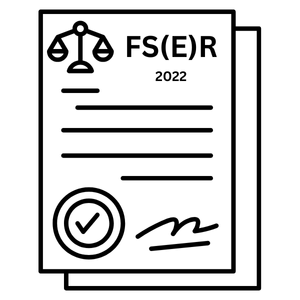Are Fire Doors a Legal Requirement?
4 min read

Fire Doors are a legal requirement in almost all buildings in the UK, and there are a number of different requirements for Fire Doors stated in the different pieces of Fire Legislation. These pieces of legislation set out requirements for Commercial Buildings and Domestic Buildings, and the requirements vary even further depending on the size and use of the property. Within these regulations there are also requirements for the components, construction, installation, checking, and inspection of Fire Doors.
What Laws Apply to Fire Doors?
There are four main pieces of legislation that apply to the requirement for, and maintenance and inspection of Fire Doors in the UK. These are as follows:


The Regulatory Reform (Fire Safety) Order 2005
This is the main piece of Fire Safety legislation covering England and Wales, it applies to all Public / Commercial Buildings and the shared areas (hallways, staircases etc.) of all Domestic Buildings containing 2 or more dwellings.
The Fire Safety Act 2021
This was an Act of Parliament brought about by the 2017 Grenfell Tower Fire, it makes adjustments and additions to The Regulatory Reform (Fire Safety) Order 2005 in regards to Fire Safety requirements in Domestic Buildings with 2 or more dwellings.


The Fire Safety (England) Regulations 2022
These regulations introduced new responsibilities and duties for building owners and responsible persons under The Regulatory Reform (Fire Safety) Order 2005. These additions are specifically related to Residential Properties, and the inspection of, and provision of information about, Fire Doors.
Building Regulations (Fire safety: Approved Document B)
This section of the Building Regulations in the UK covers Fire Safety requirements for both existing and new-build Domestic and Public / Commercial Buildings. These regulations refer specifically to the required components of Fire Doors, and where and how they should be fitted.


What are the Requirements for Fire Doors?
Every part of a Fire Door is designed with Fire Hazards in mind. Fire Doors differ from standard doors greatly, and are considerably more effective in slowing / preventing the spread of a Fire within a building.
The following list covers the different components of a Fire Door:
The Door
The door itself is constructed of Fire Resistant / Fire Proof materials, including:
- Coated / Treated Wood
- Particleboard
- Flaxboard
- MDF
- Solid Timber
- Steel
- Glass


Signage & Labelling
All Fire Doors should be recognisable with the Blue Mandatory signage. This is a Blue, Circular Sticker that reads “Fire Door Keep Shut”.
Gaps & Seals
The gaps around the outside of the door when it is within the frame should be less than 4mm.


Intumescent Strips
These are fitted around the outside of the door itself and are designed to expand when exposed to heat, sealing any remaining gaps, protecting the structure of the door, and preventing heat and smoke from passing under / around the door.
Hinges
A Fire Door is required to have a minimum of 3 hinges, and should meet the following requirements:
- They are able to withstand the heavier weight of a Fire Door
- They are able to withstand the wear and tear of being closed by the closing mechanism repeatedly
- They are able to withstand the heat and pressure of a Fire


Closing Mechanisms
It is a requirement in the majority of situations that the Fire Door is fitted with an appropriate Self-Closing device. This means that the door will close automatically either after they are used each time, or in the event of a Fire Emergency / Drill.
£14.00 | Online Fire Door Awareness Course | Same Day Digital Certificate
100% Online Fire Door Awareness Course With Instant Digital Certificate and FREE Resits. This course covers how Fire Doors work, their importance in a fire and the checks they require. Meets current regulations & is suitable for employees & managers.

Sam has been professionally associated with Health and Safety Training 1st for over 2 years and is involved in both course writing and tutoring. He has a multitude of both Construction and Wider Industry relevant qualifications and certifications.


